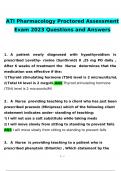Notes de cours
International & European HUMAN RIGHTS LAW VOLLEDIGE SV / AANTEKENINGEN prof K. Lemmens
- Établissement
- Katholieke Universiteit Leuven (KU Leuven)
AANTEKENINGEN / NOTA's bij ALLE lessen HUMAN RIGHTS LAW gedoceerd in de derde bachelor rechten aan de KUL door professor Lemmens. Ik was louter op basis van het studeren van dit document in eerste zit geslaagd voor het vak! Verzorgde lay-out Uitleg bij ALLE relevante case-law Uitgebreide inhou...
[Montrer plus]












